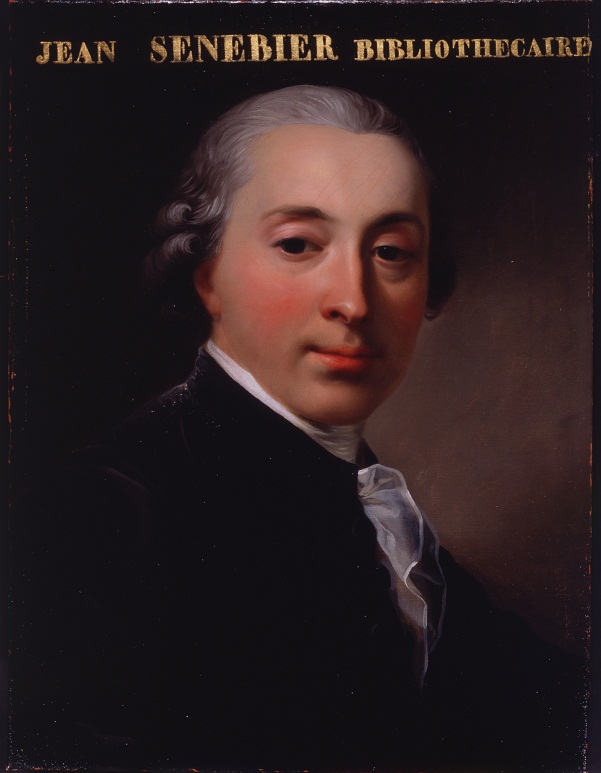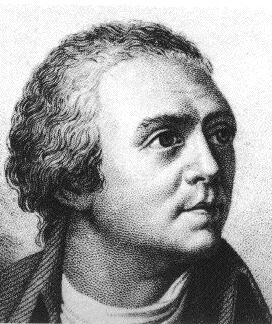<Back to Index>
- Pastor and Physiologist Jean Senebier, 1742
- Chemist and Physiologist Nicolas - Théodore de Saussure, 1767
PAGE SPONSOR

Jean Senebier (May 6, 1742 – July 22, 1809) was a Swiss pastor who wrote many works on vegetable physiology.
He was born at Geneva, and is remembered for his contributions to the understanding of the influence of light on vegetation.
Though Marcello Malpighi and Stephen Hales had shown that much of the substance of plants must be obtained from the atmosphere, no progress was made until Charles Bonnet observed on leaves plunged in aerated water bubbles of gas, which Joseph Priestley recognized as oxygen. Jan Ingenhousz proved the simultaneous disappearance of carbonic acid; but it was Senebier who clearly showed that this activity was confined to the green parts, and to these only in sunlight, and first gave a connected view of the whole process of vegetable nutrition in strictly chemical terms. He was assisted in his work by François Huber.
The standard botanical author abbreviation Seneb. is applied to species he described.

Nicolas - Théodore de Saussure (14 October 1767 - 18 April 1845) was a Swiss chemist and student of plant physiology who made seminal advances in phytochemistry.
The eldest son of Horace - Bénédict de Saussure, he was born in Geneva. He lived quietly and avoided society; yet like his ancestors he was a member of the Genevan representative council, and gave much attention to public affairs. In the latter part of his life he became increasingly reclusive, and died in the city of his birth.
While a young man, Nicolas - Théodore accompanied his father in his Alpine journeys and assisted him by the careful determination of many physical constants. He was attracted to chemistry by Lavoisier's discoveries, but he never became as great. He took a leading share in improving the processes of ultimate organic analysis; and he determined the composition of ethanol, ether and some other commonly occurring substances. He also studied fermentation, the conversion of starches into sugars, and many other processes of minor importance. The majority of his 36 published papers dealt with the chemistry and physiology of plants, the nature of soils, and the conditions of vegetable life, and were republished under the title Recherches chimiques sur la vegetationism ("Chemical investigations of vegetationism").
Saussure showed that the increase in mass of the plant as it grows could not be due only to uptake of water, but also to the uptake of CO2. Thus, the basic reaction by which photosynthesis is used to produce food (such as glucose) was outlined.
The plant genera Saussurea and Saussuria are named after him.
His sister, Albertine Necker de Saussure, is a noted early writer on the education of women.